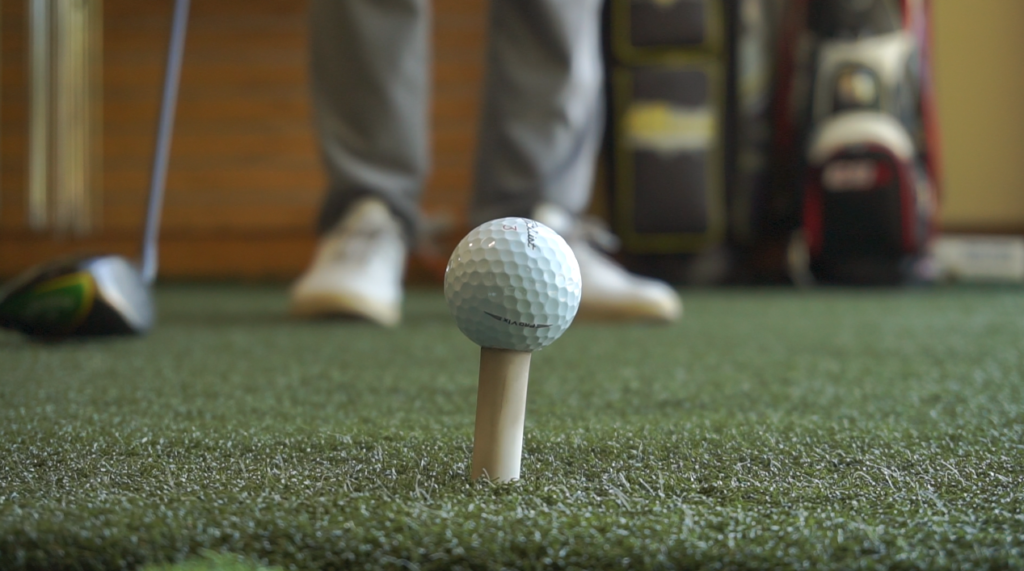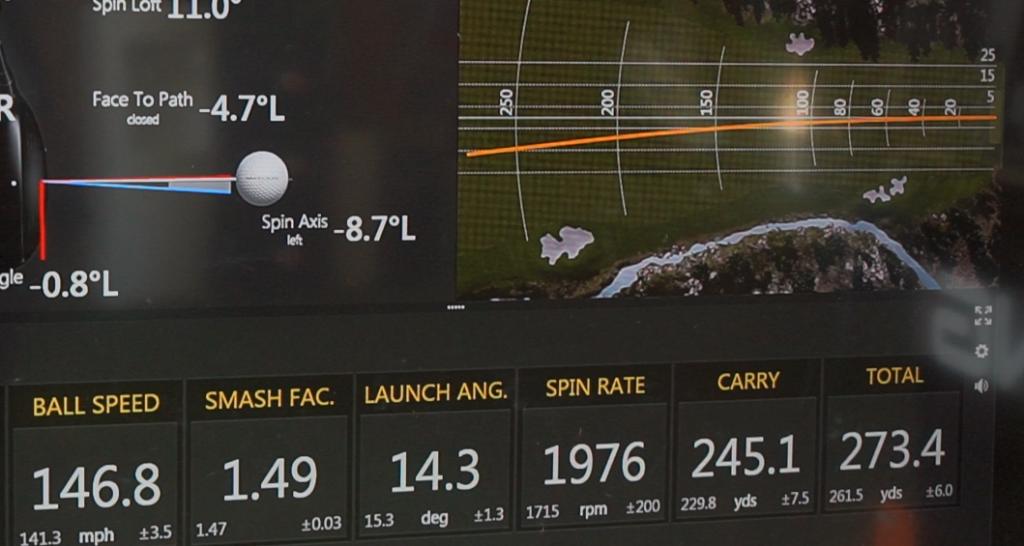
It’s one of the most asked questions in golf. Everyone wants to know which golf ball travels the farthest. Well, we tested it out with tour-level balls over $30 (a dozen) and the results may surprise you. Here are the results of our experiment.

Problem:
Which golf ball above $30 (a dozen) travels the farthest?
Hypothesis:
I believe that all of the balls will be very similar but that the Bridgestone Tour B XS will travel the farthest because it is only a 3-piece ball design and is known for its distance
Materials:
Callaway Chrome Soft X balls (6)
Titleist Pro V1x 2019 balls (6)
Bridgestone Tour B XS (6)
TaylorMade TP5x 2019 (6)
Srixon Z-Star (6)
Mizuno RB Tour X (6)
TrackMan Launch Monitor
Callaway Epic Flash
Research:
There are two types of balls, multilayer, and two-piece. Two-piece balls are made of a single core and are made for only distance. Multilayer balls have multiple layers so they usually provide the best all-around play, but they tend to be more expensive. All the balls I am testing are multilayer balls. The TaylorMade TP5x ball is a 5-piece ball. The Callaway Chrome Soft X, Titleist Pro V1x, and Mizuno RB Tour X are 4-piece balls. Meanwhile, the Bridgestone Tour B XS and Srixon Z-Star are only a 3-piece ball.
The amount and shape of the dimples on a golf ball varies greatly. According to golfball-guide.de, the more dimples on a golf ball, the higher it goes. Thus a ball with too many dimples will go too high and lose distance. Traditionally, the dimples on golf balls have always been round, but modern science shows that balls with hexagonal dimples, such as the Callaway Chrome Soft X, have a lower drag. Likewise, the dual dimple design of the Bridgestone Tour B XS supposedly reduces drag as well. The drag of a golf ball is the friction between the air and the ball and can affect the velocity in which it travels.
The cover of a golf ball is usually made out of urethane elastomer or surlyn. Urethane is a plastic rubber mix that creates good green control and is the cover for all four of the balls I’m testing. On the other hand, Surlyn is plastic which is a cheaper material than urethane. However, surlyn is more wear resistant and has less spin off the tee.
Procedures:
We utilized the TrackMan launch monitor at the Haggin Oaks Golf Complex in Sacramento, CA. The TrackMan is used in the golf industry by golf club manufacturers, golf ball manufacturers and Tour professionals to test the performance of golf clubs and balls.

Using Doppler radar, this machine allowed a golf teaching professional at the Haggin Oaks Golf Complex, to hit 5 different sets of six golf balls of similar golf club head speed on the driving range. To minimize differences, a Callaway Epic Flash driver was used on all shots. The TrackMan gave us an accurate shot distance equal to 0.1 yards. We averaged the six total shot distances for each golf ball and then compared the averages for each of the six golf balls we tested.
Results:
The results of this experiment were quite interesting. If you look at the dispersion chart you can see that the most consistent ball was the Titleist Pro V1x.
Analyzing the individual ball statistics we can see that the Titleist Pro V1x averaged the farthest distance as well at 266.7 yards. Meanwhile, the Callaway Chrome Soft X averaged the shortest distance at only 259.3 yards. This results in a difference between the average maximum and minimum of only 7.4 yards.
Additionally, the balls tested with the highest “Smash Factor” (A measure of ball speed over club speed) were the Titleist Pro V1x and the TaylorMade TP5x both tied at 1.50. The Callaway Chrome Soft X and Srixon Z-Star tied for the worst “Smash Factor” at 1.47.
Furthermore, looking at ball spin the Mizuno RB Tour X had the highest spin rate, while the Srixon Z-Star spun the least.
To analyze individual shots and more statistics on the balls please look at the following charts. They include the club speed, ball speed, smash factor, launch angle, spin rate, carry, and total for each of the balls tested.







Conclusions:
In conclusion, the Titleist Pro V1x was the winner of our test. The Pro V1x was the clear winner for both total and carry distance. Subsequently, Titleist also tied for first with the highest smash factor.
Nonetheless, it is important to mention a couple of caveats. While the test conducted was designed to reduce as much human error as possible, without a robot there will always be some error. Likewise, a larger sample size that included various golfers would improve the validity of the results as well. Ultimately, we are trying to say that your results may vary and it is important to try out various balls for yourself.
Lastly, we must note the all the balls tested in this experiment were tour-level balls. In particular, the balls are engineered for both distance off the tee, but also feel near the green. We only tested for distance.


7 Comments